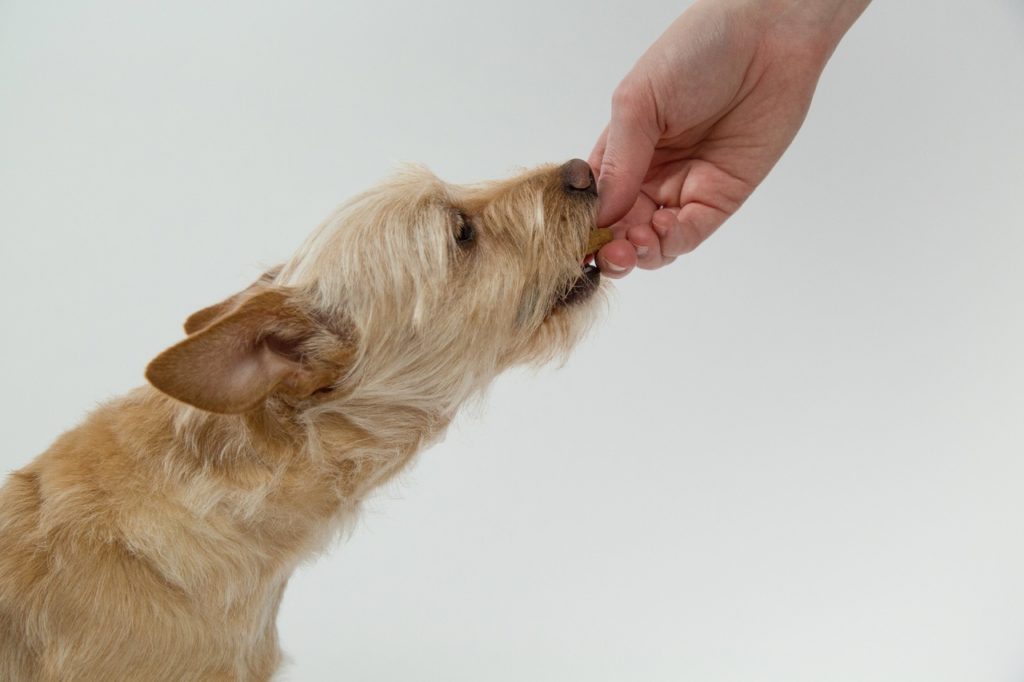Exploring the age-old debate on whether a dog's mouth is truly cleaner than a human's unveils a realm of intriguing scientific inquiries.
As we navigate through the intricate landscape of oral health comparisons between these two species, a tapestry of microbial intricacies and potential health implications unravels.
The juxtaposition of bacteria, saliva properties, and zoonotic disease risks opens a gateway to understanding the nuances of oral hygiene across different creatures.
So, what does science reveal about the cleanliness of a dog's mouth in contrast to a human's? Let's embark on this enlightening journey of discovery into the realms of oral microbiomes and beyond.
Key Takeaways
- Both dog and human mouths contain billions of microorganisms, emphasizing the similarity in oral microbiomes.
- Caution is advised due to the potential transfer of zoonotic diseases from dogs to humans.
- Dog saliva possesses antibacterial properties but excessive wound licking can lead to infections.
- Regular oral care, including brushing teeth and dental check-ups, is vital for a dog's oral health.
Oral Microbiome in Dogs Vs Humans
Comparatively, both dogs and humans harbor complex oral microbiomes consisting of billions of microorganisms, encompassing bacteria, fungi, and viruses. These microbial communities play a crucial role in maintaining oral health by aiding in digestion, protecting against harmful pathogens, and contributing to overall immune function.
In dogs, the oral microbiome is influenced by factors such as diet, breed, and oral hygiene practices. Similarly, in humans, lifestyle choices, genetics, and oral care habits impact the composition of the oral microbiome.
Understanding the similarities and differences in the oral microbiomes of dogs and humans is essential for developing effective strategies to promote oral health and prevent conditions such as periodontal disease.
Porphyromonas Bacteria and Oral Health
Both dogs and humans face potential oral health risks due to the presence of Porphyromonas bacteria, which can contribute to conditions like periodontal disease. These bacteria are common in the mouths of both species and require proper management to prevent oral health issues. Here are five key points to consider:
- Porphyromonas bacteria in both dogs and humans can lead to periodontal disease.
- Regular dental care is crucial for preventing complications associated with Porphyromonas bacteria.
- P. gingivitis is the harmful Porphyromonas bacteria in humans, while in dogs, it's P. gulae.
- Proper oral hygiene practices, such as brushing and dental cleanings, are essential for combating Porphyromonas bacteria.
- Untreated Porphyromonas infections can result in severe oral health problems for both dogs and humans.
Zoonotic Diseases and Transmission Risks

Zoonotic diseases pose potential health risks as certain germs present in dogs can be transmitted to humans, emphasizing the importance of understanding transmission risks.
While most germs in a dog's mouth are not typically zoonotic and do not spread disease easily, caution is advised when dogs come into contact with fecal material or other potentially harmful items.
Zoonotic diseases, such as rabies, can be transmitted from dogs to humans, highlighting the need for preventive measures. Proper hygiene practices, including regular handwashing and avoiding contact with a dog's saliva, can help mitigate the risk of zoonotic disease transmission.
Awareness of zoonotic diseases and their transmission risks is essential for promoting the health and well-being of both dogs and humans.
Germs in Dog's Mouth
Examining the microbial composition of a dog's mouth provides valuable insights into the presence of germs and potential oral health implications.
- Dogs have billions of microorganisms in their mouths, including bacteria, fungi, and viruses.
- Porphyromonas bacteria in dogs can lead to periodontal disease, similar to humans.
- P. gulae is the harmful Porphyromonas bacteria specific to dogs.
- Regular dental care is crucial for maintaining oral health in dogs.
- While most germs in a dog's mouth are not typically zoonotic, caution should be exercised to prevent the spread of disease through contact with fecal material or other harmful items.
Dog Saliva's Properties and Functions

The properties and functions of dog saliva play a crucial role in maintaining their oral health and overall well-being. Dog saliva contains various enzymes, such as lysozyme and lactoferrin, which have antibacterial properties that help control bacteria levels in their mouths.
Additionally, dog saliva contains growth factors that aid in wound healing and tissue repair. These growth factors can help soothe minor irritations and cuts in a dog's mouth. However, excessive licking of wounds can lead to skin damage and potential infections.
Therefore, while dog saliva has some beneficial properties, it's essential to monitor and limit licking behaviors to prevent complications. Proper wound care protocols are recommended to ensure the health and well-being of dogs.
Wound Licking in Dogs
How does wound licking behavior in dogs impact their skin health and potential for infections?
- Dog saliva contains antibacterial substances that can aid in wound healing.
- Excessive licking of wounds can introduce more bacteria and contaminants, leading to infections.
- Constant licking can irritate the skin, causing inflammation and delaying the healing process.
- Dogs may develop hot spots from persistent licking, requiring veterinary intervention.
- Proper wound care protocols, including preventing dogs from licking wounds and ensuring cleanliness, are essential to avoid complications.
Risks of Excessive Wound Licking

Excessive wound licking in dogs can exacerbate skin infections and delay the healing process, posing risks to their overall health.
While dog saliva contains some antibacterial properties that can aid in wound healing, excessive licking can introduce more harmful bacteria into the wound, leading to skin damage and potential infections.
Constant licking can also irritate the skin, creating hot spots that are painful and require medical attention.
To prevent these complications, it is crucial to discourage dogs from excessively licking wounds and to follow proper wound care protocols.
Monitoring and managing wound licking behavior in dogs can help maintain their skin health and prevent further complications that may arise from untreated or aggravated wounds.
Importance of Dog's Oral Care
Maintaining optimal oral health in dogs is paramount for ensuring their overall well-being and longevity. Proper oral care not only prevents dental issues but also contributes to the overall health of our canine companions.
Here are five key points emphasizing the importance of a dog's oral care:
- Regular dental care is essential for maintaining oral health.
- Brushing a dog's teeth regularly is recommended by veterinarians.
- Dental chews approved by the Veterinary Oral Health Council can help maintain oral hygiene.
- Annual dental exams and cleanings are crucial for a dog's dental health.
- Good oral hygiene can prevent bacteria buildup, which can lead to gingivitis and other dental issues.
Bacteria Buildup and Dental Issues

Proper dental care plays a pivotal role in preventing bacteria buildup and associated dental issues in dogs, contributing significantly to their overall health and well-being. Bacteria in a dog's mouth can lead to plaque formation, gingivitis, and potentially more severe conditions like periodontal disease.
Without regular dental care, bacteria can multiply, leading to bad breath, tooth decay, and even tooth loss. Periodontal disease can affect not only the teeth but also the gums and the supporting structures of the teeth, causing pain and discomfort for the dog.
It is essential to prioritize oral hygiene in dogs by implementing proper dental care practices, such as regular teeth brushing, providing dental chews, and scheduling annual dental exams to prevent bacteria buildup and maintain their oral health.
Recommended Oral Care Practices
To ensure optimal oral health for dogs, implementing recommended oral care practices is essential.
- Regularly brush your dog's teeth with veterinarian-approved toothpaste and a dog-specific toothbrush.
- Provide dental chews approved by the Veterinary Oral Health Council to help reduce plaque and tartar buildup.
- Schedule annual dental exams and cleanings with your veterinarian to address any developing oral health issues.
- Monitor your dog's oral health for signs of gum disease, bad breath, or tooth decay.
- Avoid giving your dog human food that can contribute to dental problems, and opt for dental-friendly treats instead.
Dental Chews for Oral Hygiene

Dental chews endorsed by the Veterinary Oral Health Council play a crucial role in promoting optimal oral hygiene in dogs. These chews are specifically designed to help reduce plaque and tartar buildup, which can contribute to dental issues such as gingivitis and periodontal disease.
By encouraging chewing, these treats help clean the teeth and massage the gums, promoting better overall oral health for dogs. Additionally, some dental chews contain ingredients that can freshen breath and even provide additional nutrients to support a dog's overall well-being.
When used as part of a comprehensive oral care routine that includes regular brushing and veterinary check-ups, dental chews can be a valuable tool in maintaining a dog's dental health and preventing potential oral problems.
Annual Dental Exams for Dogs
Annual dental exams for dogs are essential for maintaining their oral health and overall well-being. Regular check-ups can help prevent dental issues and ensure your furry friend's teeth and gums are in good condition. Here are five key reasons why annual dental exams for dogs are crucial:
- Early detection of dental problems such as tartar buildup and gum disease
- Professional cleaning to remove plaque and prevent tooth decay
- Assessment of any signs of oral pain or discomfort
- Recommendations for at-home dental care practices
- Overall improvement of your dog's quality of life through better oral health
Don't overlook the importance of scheduling annual dental exams for your canine companion to keep their smile bright and healthy.
Conclusion
In conclusion, the comparison between the oral health of dogs and humans reveals a complex interplay of microbial compositions, zoonotic disease risks, and saliva-related behaviors.
While myths may suggest a dog's mouth is cleaner, evidence shows potential pathogenic bacteria and dental issues exist in both species.
Implementing recommended oral care practices, such as dental exams and dental chews, is crucial for maintaining optimal oral hygiene for dogs and humans alike, promoting overall well-being across species.




